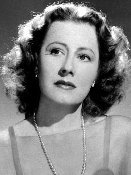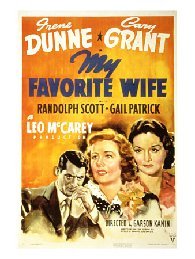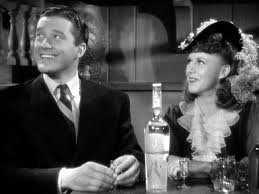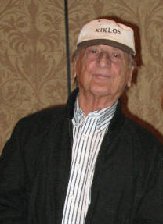
Samuel Colt (July 19, 1814 – January 10, 1862) was an American inventor, industrialist, and businessman who established Colt's Patent Fire-Arms Manufacturing Company (now Colt's Manufacturing Company) and made the mass production of revolvers commercially viable.
Colt's first two business ventures were producing firearms in Paterson, New Jersey and making underwater mines; both ended in disappointment. His business affairs improved rapidly after 1847, when the Texas Rangers ordered 1,000 revolvers during the American war with Mexico. Later, his firearms were used widely during the settling of the western frontier. Colt died in 1862 as one of the wealthiest men in America.
Colt's manufacturing methods were sophisticated. His use of interchangeable parts helped him become one of the first to use the assembly line efficiently. Moreover, his innovative use of art, celebrity endorsements, and corporate gifts to promote his wares made him a pioneer of advertising, product placement, and mass marketing.
1847 – Samuel Colt sells his first revolver pistol to the United States government.
During 1835, Samuel Colt traveled to the United Kingdom, much as did Elisha Collier, a Bostonian who had patented a revolving flintlock there that achieved great popularity. Despite the reluctance of English officials to issue a patent to Colt, no fault could be found with the gun and he was issued his first patent (Number 6909). Upon his return to America, he applied for his U.S. patent for a "revolving gun"; he was granted the patent on February 25, 1836 (later numbered 9430X). This instrument and patent No. 1304, dated August 29, 1836, protected the basic principles of his revolving-breech loading, folding trigger firearm named the Colt Paterson.
Samuel Colt died of complications of gout in Hartford on January 10, 1862. He was interred on the property of his private residence Armsmear and reinterred to Cedar Hill Cemetery in 1894.[64] At the time of his death, Colt's estate, which he willed to his wife and three-year-old son Caldwell Hart Colt, was estimated to be valued at about $15,000,000 (equivalent to US$389,000,000 in 2020). His professional responsibilities were given to his brother-in-law, Richard Jarvis.
In 2006, Samuel Colt was inducted into the National Inventors Hall of Fame.
If you want to read a lot more ... go here:
https://en.wikipedia.org/wiki/Samuel_Colt
You need to try these No-Fuss Sticky Buns from his cookbook. The flakey dough, caramelized pecan swirl, and nutty topping make these a must have at any breakfast work remembering.
- 1/2 cup packed light brown sugar, divided
- 3 tablespoons butter, melted, divided
- 1 tablespoon light corn syrup
- 3/4 cup chopped pecans, divided
- 1 (8-ounce) package refrigerated crescent roll dough
- 1 teaspoon ground cinnamon
- Preheat oven to 375º. Coat an 8-inch square baking dish with cooking spray.
- In a small bowl, combine 1/4 cup brown sugar, 2 tablespoons melted butter, and the corn syrup; mix until smooth, then spread over bottom of baking dish. Sprinkle with 1/2 cup pecans.
- Unroll crescent dough and press seams together to form one large rectangle. Brush with remaining 1 tablespoon melted butter. Sprinkle with remaining 1/4 cup brown sugar, the cinnamon, and the remaining 1/4 cup pecans.
- Starting at the wide end, roll up jelly roll-style. With a sharp knife, cut into 9 equal slices and place each slice cut-side down in baking dish.
- Bake 18 to 20 minutes, or until the dough is puffed and golden. Remove from oven and carefully invert onto serving platter immediately. Allow to cool slightly and serve warm.
Across the nation each year on December 20th, National Sangria Day recognizes a wine and fresh fruit combination that brings a fresh celebration to the table.
Sangria is a beverage made with wine and sweetened with fresh fruit and fruit juices. Other ingredients can include herbs, spices, carbonation, and liquor. The combinations are endless, giving sangria a place in the cocktail rotation year-round. Refreshing and light during hot summer months, bright and sparkling during the winter ones, this fruity punch is quite versatile.
Sangria made with white wine is called Sangria Blanca.
Use fresh fruit in season for the best flavors. Once mixed, sangria should be chilled and the fruits allowed to marinate for a few hours or overnight. When making sangria, if you use 100% juice, you’ll gain the maximum benefits, too. Eating the fruit versus all the sweet cakes and pies over the holidays will be healthier. Get the benefits of red wine, but drink in moderation and sangria will be worth all the celebration.
HOW TO OBSERVE
Include sangria with your holiday celebrations. Add flavors that compliment your meals and bring sparkle to your evenings. Hostesses may offer more than one sangria to please the many palates of our guests, too. With so many recipes, it’s easy to please. Don’t hesitate to sample a few ahead of time. We offer a few different recipes to try. Share your favorites this holiday season. And then be sure to find more for the rest of next year, too!











